Set 10280 Botanical Collection is an adult oriented floral build that is a bit of a departure from the sets LEGO typically releases. LEGO & Brickcentral provided Ohsomebrick & SarouxBastoux with the set so they could review and shoot it for us. Spoilers, they both liked it! However, they have different things to say about it and most significantly they have some very different tips for photographing the set.
Below you can find out what Ohsomebrick thought of the set and get some insights into her shoot – though please note, some advanced techniques are used in this shoot. You can find the alternative take from SarouxBastoux here. Now over to Ohsomebrick…
The Set
It is big. It is colourful. It is an eye-catcher. But seriously, it’s awesome.
If you still haven’t given up on showing your family and friends that LEGO is not only for kids – this is your chance to win them over. The new Botanical Collection sets will certainly give your guests something to talk about.
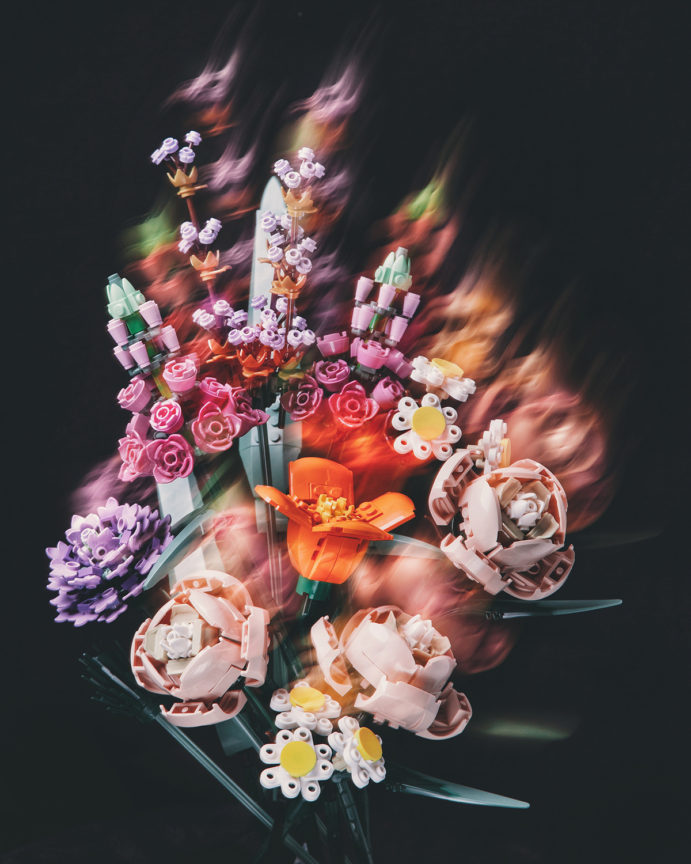
Reviewing this set is not easy, mainly because it’s the first time I’m doing a review, but also because it’s something completely new in the LEGO range of products.
The impression I get from the box and the design of the instructions is that the main purpose of this set is to ornate and create a certain ambiance. From my experience, I can say that I can clearly see this bouquet displayed in shop windows or in an office.
Parts wise, what first strikes the eye are the Dinosaur Wings used as rose leaves. This is a very creative choice which certainly livens the build process. But… all of the wings are not right. They are LEFT! Since the box states it is a “Collection”, I strongly hope LEGO will introduce other sets from this range and there will be RIGHT dinosaur wings there too.
Other interesting parts include Large Claws and Surfboards in Sand Green, as well as long Technic Axles which are quite rare and they were never released previously in this colour.
The set also includes 65 Technic Connectors in Dark Green! There are many other new pieces and recolours in this set too. The Flower Bouquet has an RRP of $49.99/€49.99/£44.99, which makes it a rather reasonable 6.6c/6.6c/6.0p per part. I would say the set is a marvelous parts source for any LEGO builder.
In the bouquet, there are 8 species of plants/flowers you can build. The builds are quite straightforward and I’ll show how every flower is built in the pictures below. Each female member of my family has her favourite blossom:
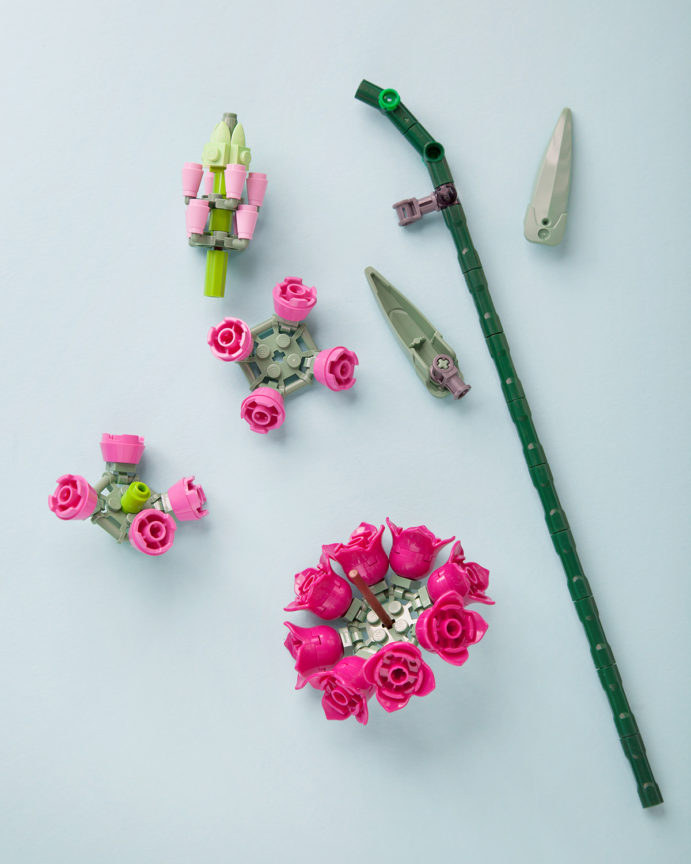
My 3-year-old daughter chose the brightest ones – the Snapdragon flowers. I think they are the eye-catchers of the set and they also give the bouquet the volume and are the center point around which other flowers can be arranged.
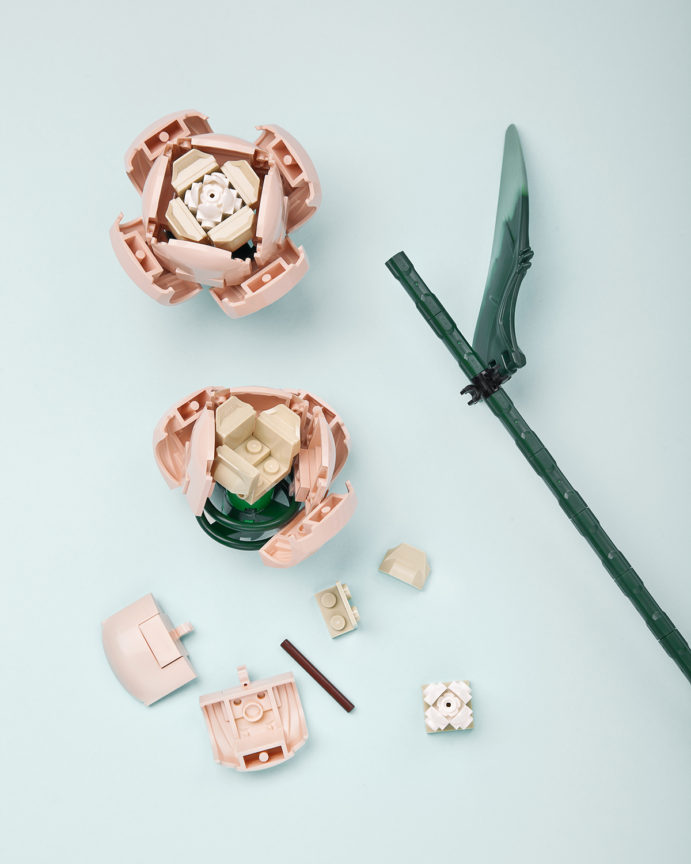
My elder daughter loves the Roses. She says they look simply amazing and just like ones a fairy-tale princess would have in her garden. There are three of them in the set, two are built on straight stems and the third on an angled one using a Technic Connector Angled #3.
I read some people’s comments complaining about this rose not looking “fresh”, but in my opinion, these roses are just of another kind. My guess would be some kind of a “tea rose” variety, which also explains the colour of the petals.
The Dinosaur Wings are certainly an interesting choice to be used as leaves but they appear a bit too big for the roses. On the other hand, the thorns look just as intimidating as they look in real life on real roses!
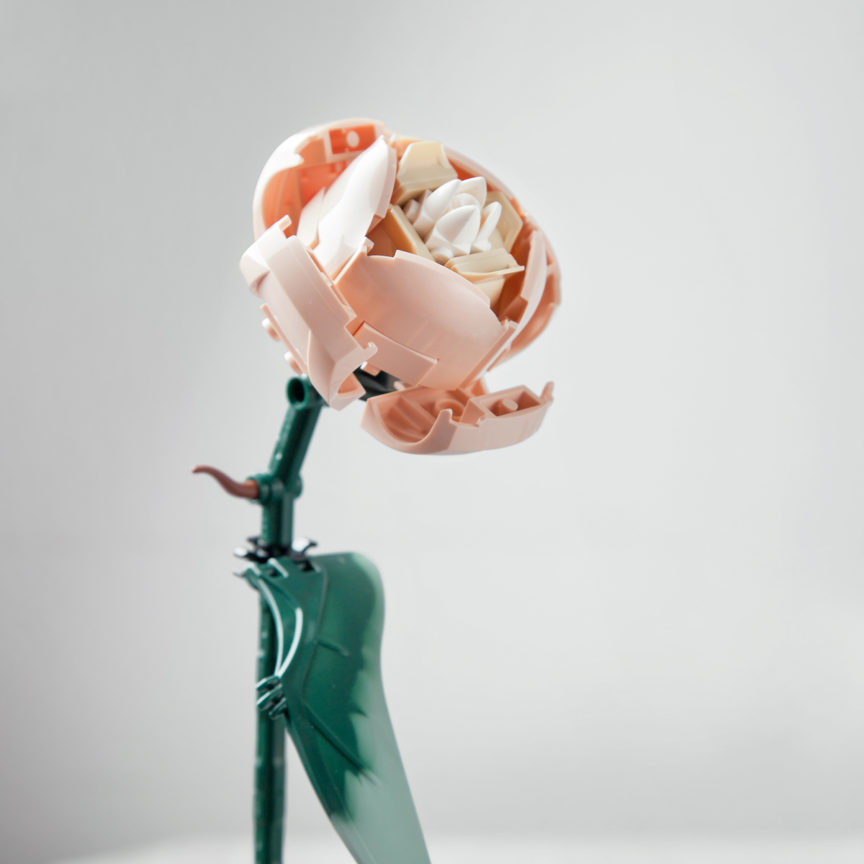
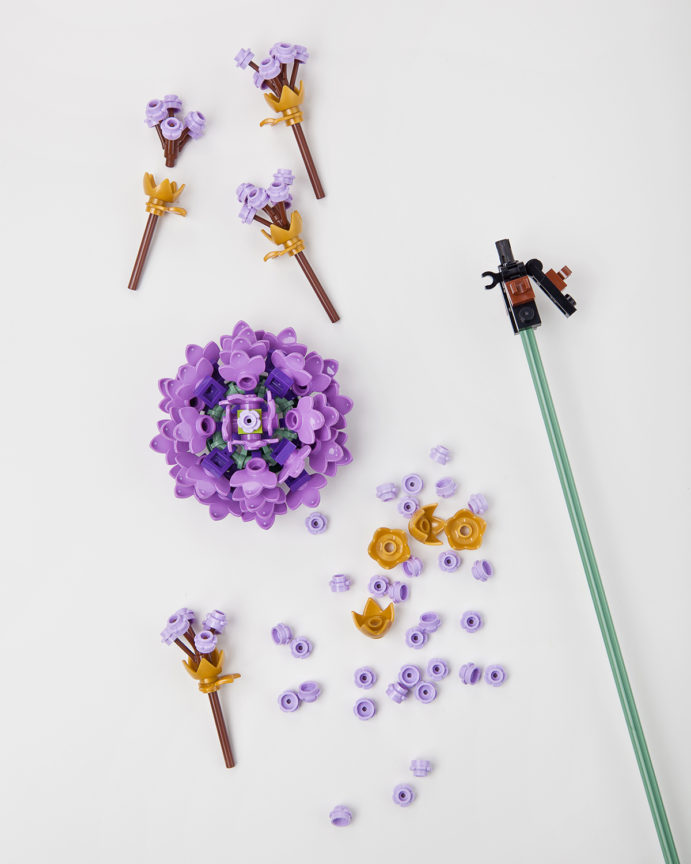
My preferred flower is the Aster, plus the “Bushes” and the “Surfboard” Leaves. The Aster is very appealing in texture and color, but the build requires a lot of repositioning of the petals in order to achieve the perfect look.
Many kinds of asters have a distinctive cluster of green leaves at the bottom of the blooms so I will certainly try modifying the flower I have
The Lavender gives the necessary delicacy and airiness to the composition. The height of its blooms can be easily adjusted, but unfortunately it is the flimsiest flower of them all in the set. It is also the most challenging one to build as it requires positioning many tiny flowers on stalks.
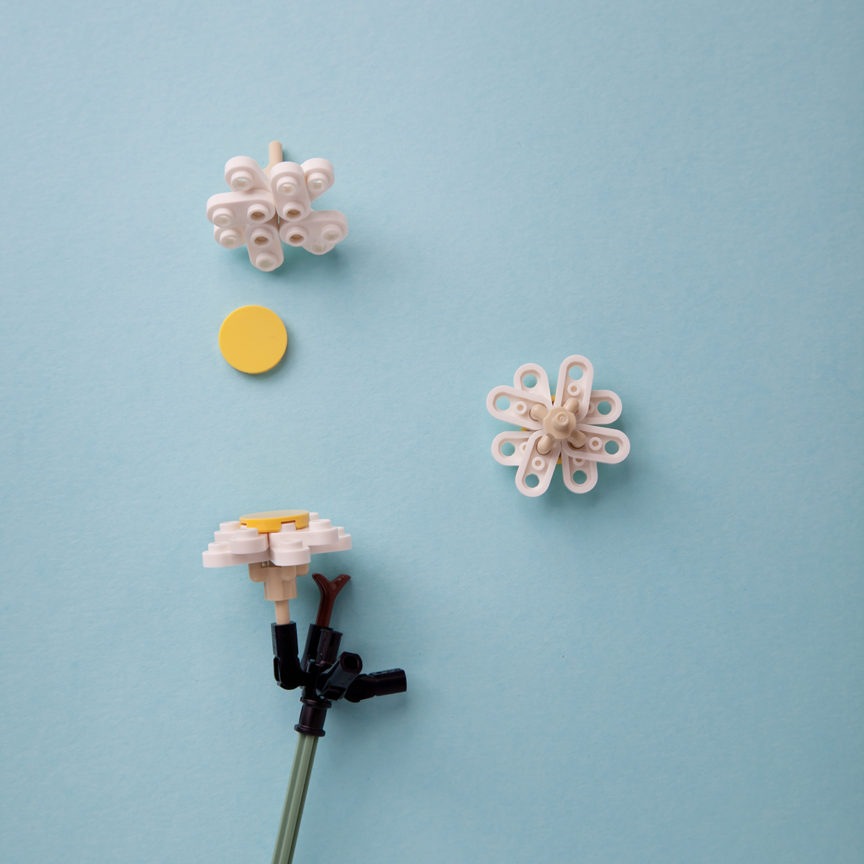
The Daisies, on the other hand, are the sturdiest ones. Not once have they broken during the photo shoot, arranging the bouquet or during a play.
They are the easiest to build and:and you can easily fill the gaps in composition with them to achieve the balanced look.they look very modest but I cannot imagine this set without them
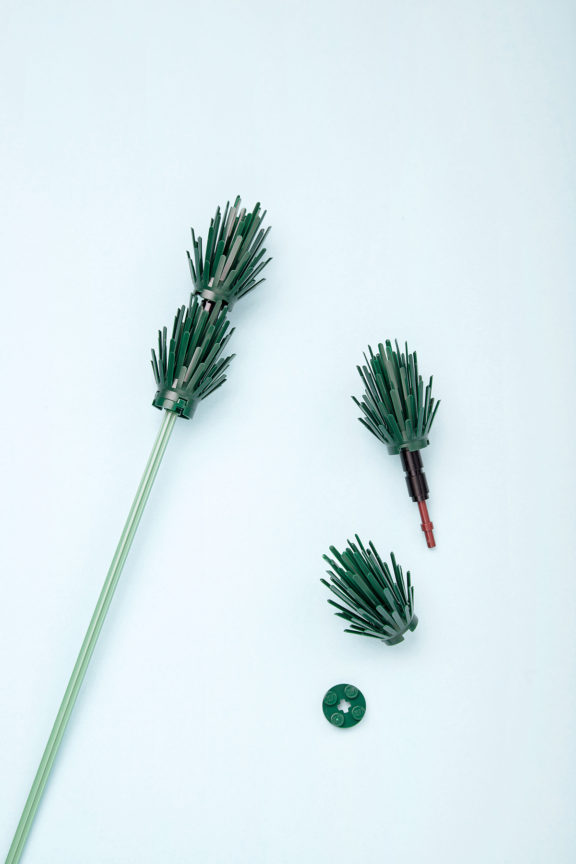
The “Bush” leaves in dark green and the “Surfboard” leaves in Sand Green provide the necessary variety of texture for arranging a perfect bouquet. And I always welcome new additions and recolours to the LEGO plants parts range. One can never have enough LEGO leaves or bushes.
The “Bush” leaves are a challenging object to shoot as they are quite dark and matt in appearance, in contrast to the other flowers and foliage.
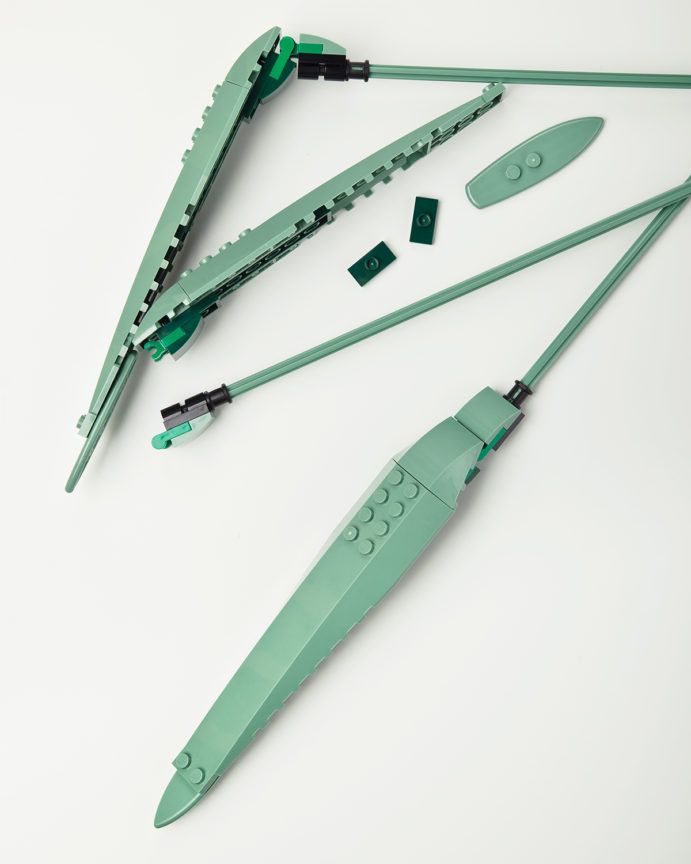
An interesting thing about the “Surfboard” leaves is they could be the perfect leaves for another flower set – LEGO 40461: Tulips. The foliage in that set looks kind of dull and scarce for anyone who’s seen a real tulip bloom.
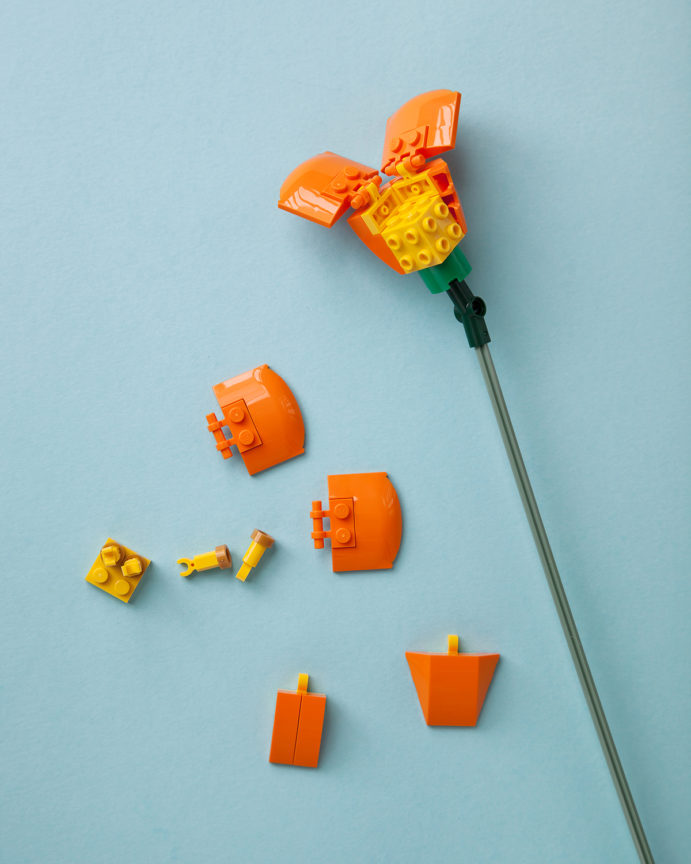
The Poppy flower is a sturdy colourful build that proves once again how truly versatile LEGO car bonnets are. The poppy is seen on (most of) the official photographs with its petals completely open, but I think it looks better open half-way. I love the bright and harmonic bunch the Poppy creates with the Aster, the Lavender and the Daisies.
Overall, the set is a great display piece to add colour to your home. The flowers can be arranged together to create a larger eye-catching scene, but they can also be used individually or in groups depending on the style you are going for. For example, roses look very stylish and minimalistic on their own, while all the other flowers can be used as a perfect garden style bouquet.
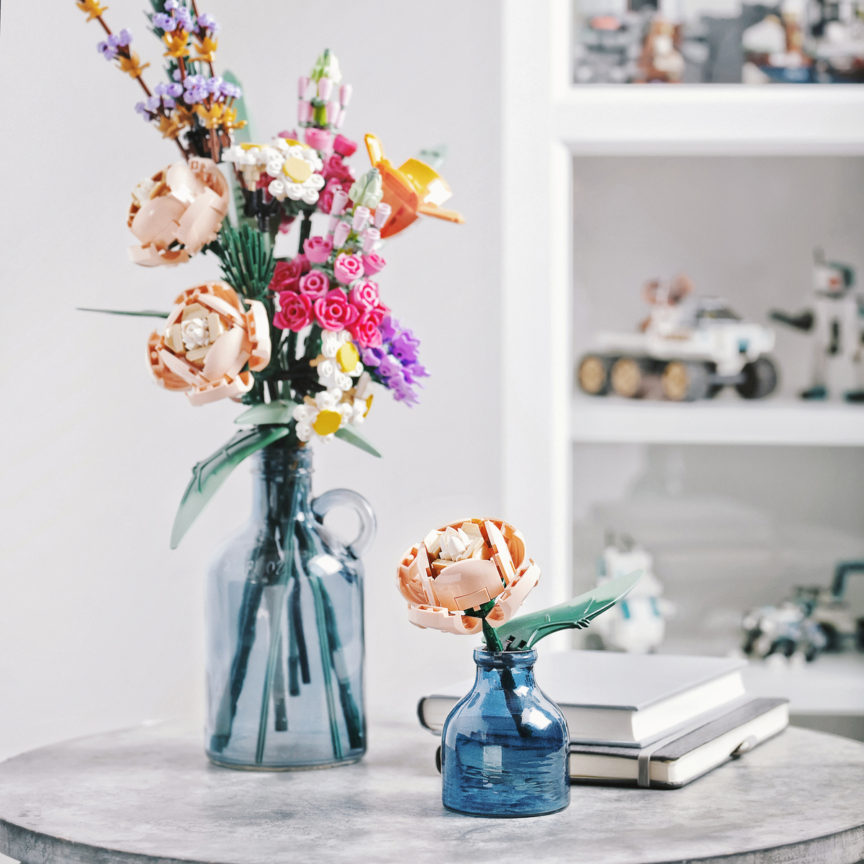
Having said all that, I can imagine an AFOL such as myself building this set together with my non-AFOL friends or family members, and I am sure that it has a great potential to provide an enjoyable building experience to everyone.
This, I think, is the best thing about the whole Botanical Collection theme. I own this set and already have assembled it, but I look forward to building it once again with my mom once the pandemic is over and the travel bans are lifted.
Some people believe that many recent themes such as the Botanical Collections, the Mosaics, etc, are unnecessary deviations from the more conventional LEGO company products that only waste the company’s time and resources. I think that venturing into these kinds of products is only a logical step for the company that has advocating and inspiring creativity as one of its core values.
It also indicates that the company is thriving so we LEGO fans can look forward to more surprises and excitement.
The Shoot
The Flower Bouquet was a tricky object to photograph: I found myself battling with some parts of the blooms falling off while trying to arrange all the flowers into a perfect composition. Lots of reflections were flaring from every flat and curved surface. That gave me the idea to create a long exposure with motion effects by moving my camera while shooting.
What I wanted to do was create a photo where the bouquet is sharp, but there are trails of movement around it.
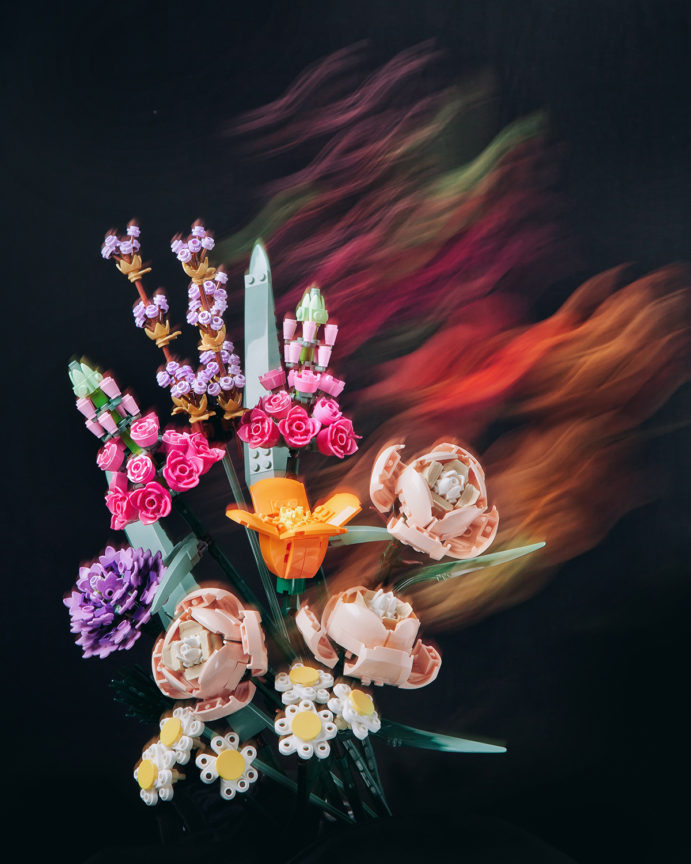
The more shiny reflective surfaces that are lit in the frame, the more radiant and striking the result will be. So all those reflective surfaces on the flowers were perfect for the effect I was going for.
To do this, I needed to mix flash with a continuous light source.
Usually these are two separate light sources. But my flash has a modeling lamp which is basically a light that stays on to help the photographer see what the flash is going to illuminate. The effects of the modeling lamp are usually not seen in a typical photoshoot.
I must admit that using the modeling lamp for this effect is usually not the best thing to do. A better way is to use another source of continuous light so you can control the light better with positioning or flags.
However, for my purpose the model light was acceptable as I wanted all the flowers showing their designs simultaneously in one big parade of colours.
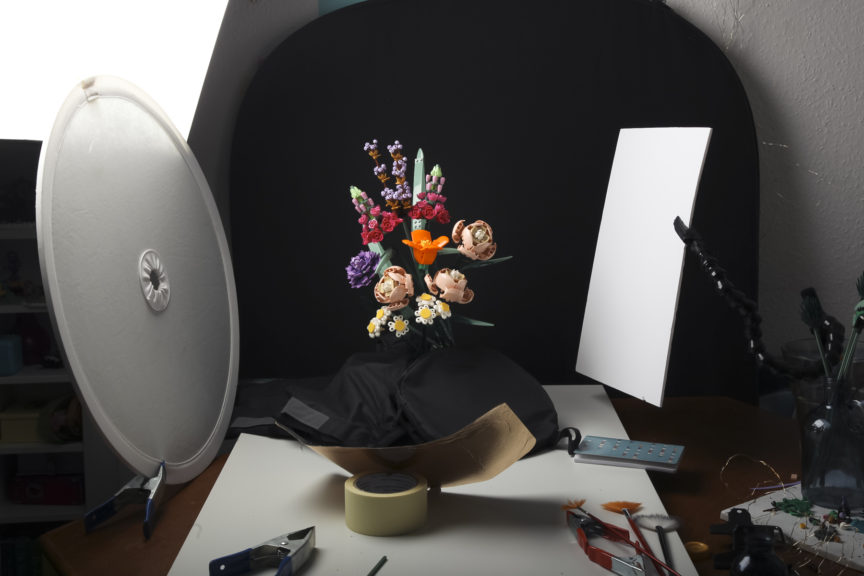
I chose the most obvious features of the set to express: its colors, joyfulness and creative building techniques.
For maximum effect, I used a black background so the flowers and the effect would really stand out. The flowers were positioned in floristic styrofoam which was covered with a black cloth to prevent it from appearing in the final image.
I positioned my flash overhead and used reflectors to bounce the light to the desired places on the flowers.
In order to achieve the effect there should be no other light source in the room, no ambient light at all, except for the modeling lamp. The camera should be set at ISO 100 to avoid any noise.
The shutter speed is the key ingredient for the effect: the lower the power of your continuous light is, the longer your shutter speed needs to be and more time you will have to create the effect. I recommend setting the shutter speed from 1 to 5 seconds for different “light trails”.
The flash freezes the scene so you will have a clear image of the bouquet and during the long exposure, your continuous light and the movements of the camera create the magic lines around it.
I used no tripod and it allowed me to move the camera freely in any direction for the desired effect. The flash captures the necessary details so there’s really no need for the tripod – it can only interfere with your movements.
After the flash fired, I moved my camera down and slightly to the left in wave-like motion to create this image:
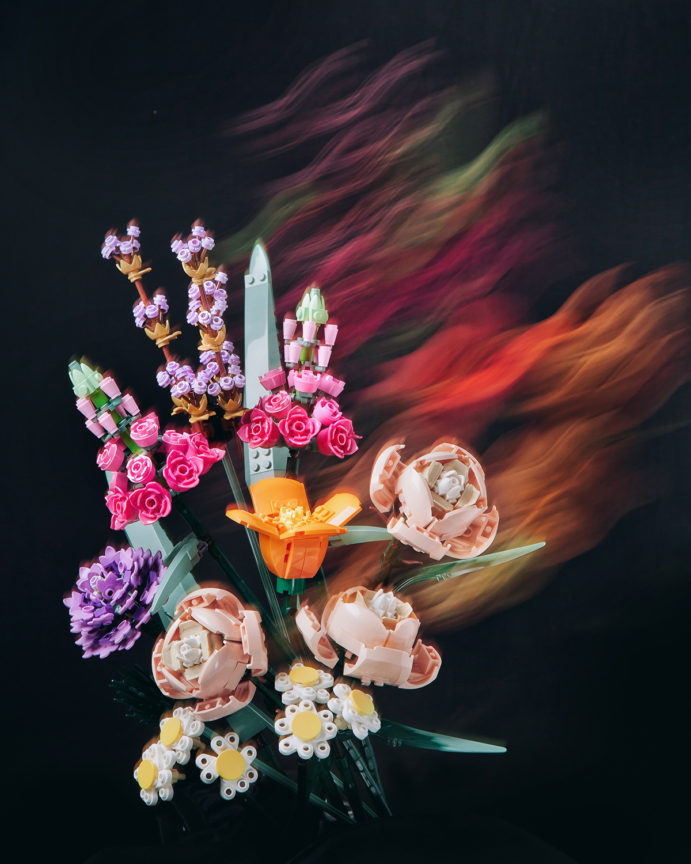
Do not forget to adjust your framing accordingly to the effect direction. Here I positioned the bouquet at the bottom and to the left of the frame as I needed the wave effect streaming towards the upper right corner of the frame.
And here is an example of what an image can look like with a lighter background:
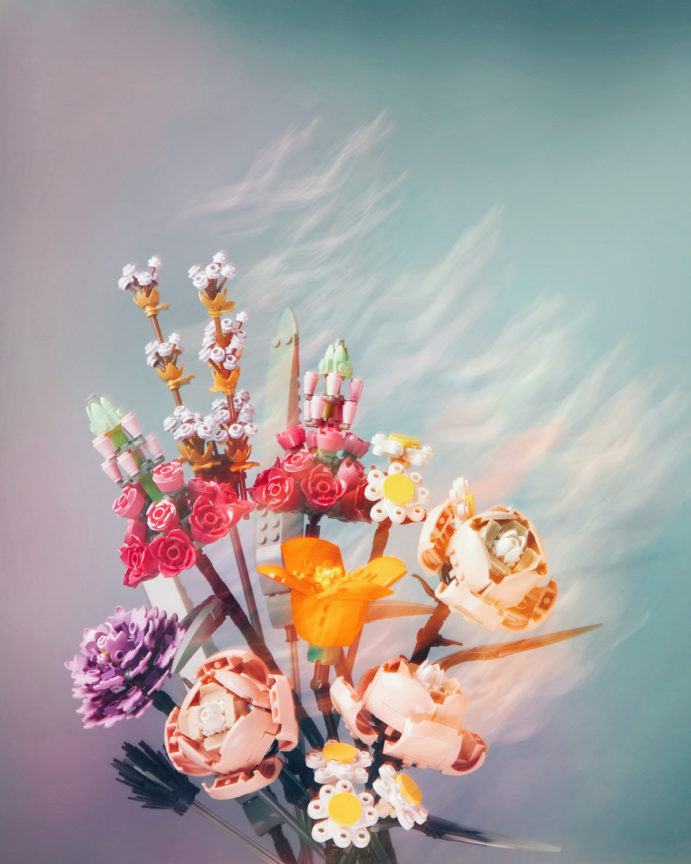
You can also create images without the flash if you don’t want a crisp subject:
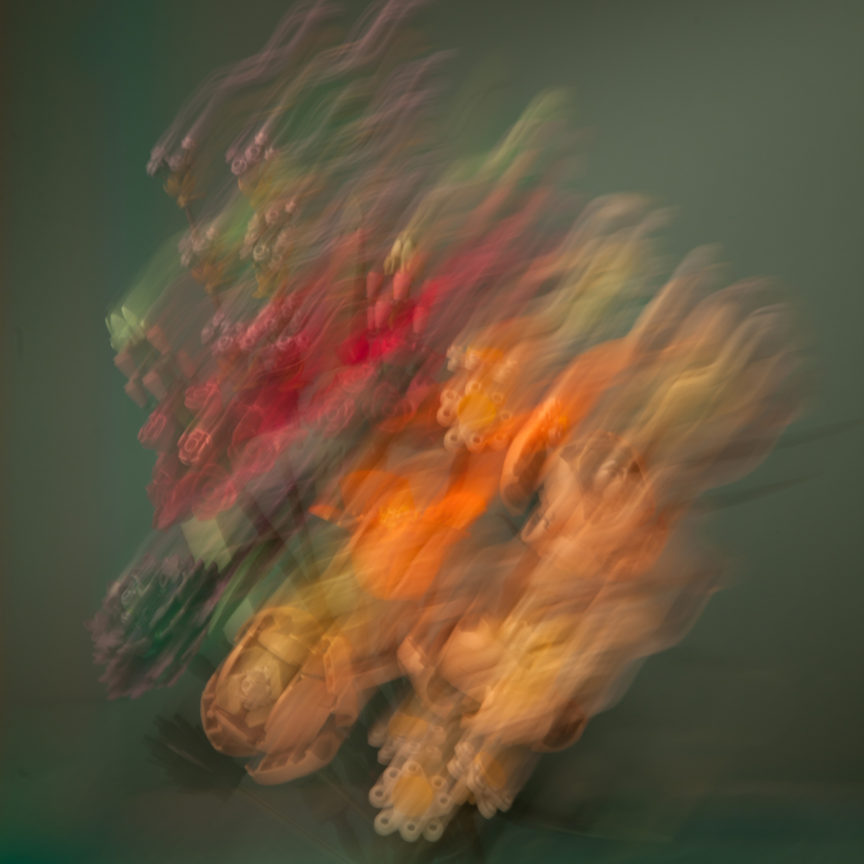
You can also use the zoom your lens instead of moving the camera after the flash fires:
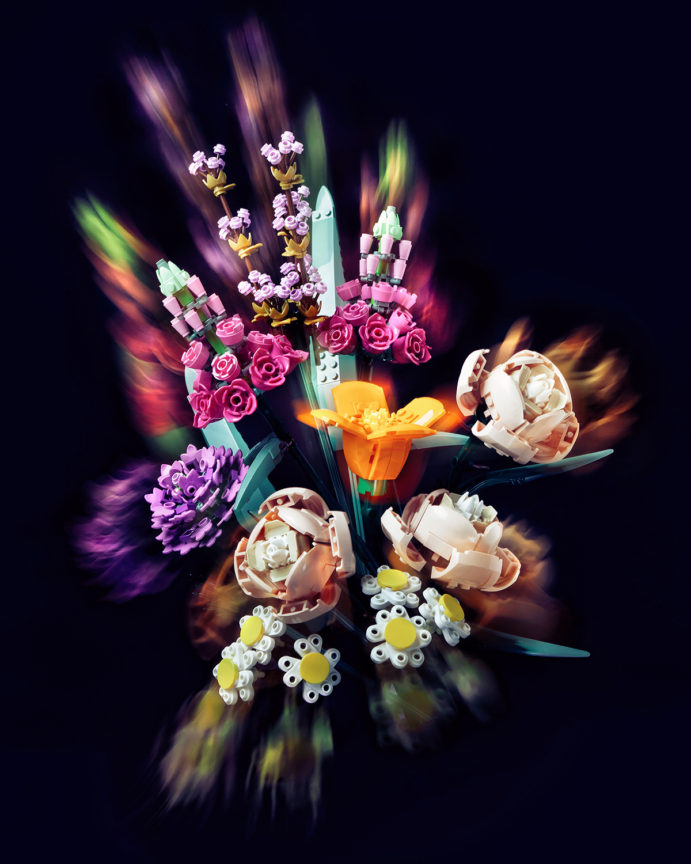
There is certain freedom in the range of motions you use with the camera. There can be tilting, rotating, zigzagging or any combination of all the moves you can think of. For example, here I chose a bit of moving, then freezing, then moving again. (All movements with the camera or lens happen after the flash fires).

To add even more dazzle to the image you can use other light sources positioned within the frame, e.g., led garlands or sparklers.
This is an amazing technique and it could be a source of endless creative effects with which you can express any idea you want. And straight from the camera – no Photoshop tricks needed!
LEGO 10280 Botanical Collection is available from LEGO retailers now for $49.99/€49.99/£44.99.

One Comment
Comments are closed.